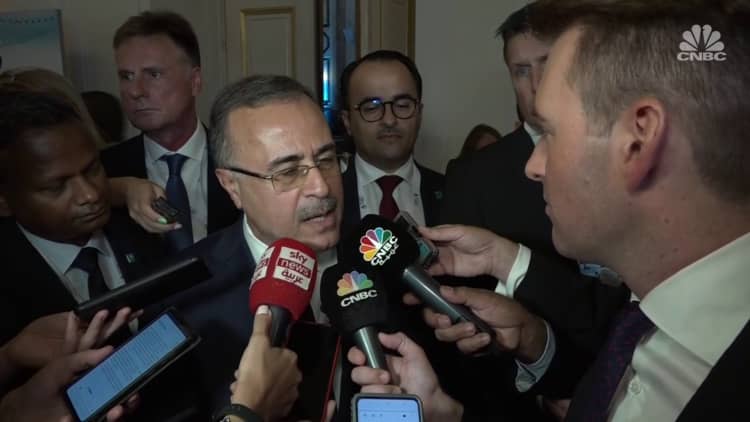[ad_1]
Amin Nasser, chief executive of Saudi Arabian oil giant Aramco.
Adam Galica | CNBC
The chief executive of Saudi Arabian oil giant Aramco on Wednesday attributed the ongoing depression of oil prices to recessionary fears and economic headwinds, painting a more optimistic landscape for demand to come.
“This is in a year where there [are] economic headwinds, where there [are] recessionary signs everywhere … China’s still picking up,” Aramco’s Amin Nasser said at a Vienna conference of the Organization for Petroleum Exporting Countries, in answer to a CNBC question on the continuing low level of oil prices.
Global crude oil prices have stayed tightly rage-bound just above the $75-per-barrel threshold despite a spate of additional voluntary cuts that some OPEC members are implementing until the end of 2024.
On Monday, heavyweights Saudi Arabia and Russia — who lead the group of OPEC countries and its allies, known as OPEC+ — crowed this effort with pledges for additional declines. Riyadh intends to extend a 1-million-barrel-per-day voluntary cut initially declared for July into August, while Moscow has committed to lower its exports by 500,000 barrels per day next month.
Yet prices for Brent futures with September expiry were just $76.76 per barrel at 2:28 p.m. London time, up by 51 cents per barrel from the previous settlement.

Nasser signaled that the demand picture is likely to improve, stressing the potential of China, the world’s largest importer of crude oil.
“When things picks up, and [the] economy starts improving, China starts picking up, jet fuel picks up … we are optimistic about the future,” he said, noting that the demand for the jet fuel supplies that are integral to the aviation sector remain below levels experienced before the onset of the Covid-19 pandemic.
He did not specify a timeline for this demand recovery, but Paris-based energy watchdog the International Energy Agency in May flagged “tighter market balances we anticipate in the second half of the year, when demand is expected to eclipse supply by almost 2 mb/d.”
Market watchers have been on the particular lookout for demand improvements from China, whose consumption was limited by zero-Covid measures before beginning to resurge since the start of the year.
“We are making bigger investments. Our guidance is $45 to $55 billion for this year, that’s growing in leaps. So that shows our confidence in the future,” Nasser said, referencing Aramco’s capital expenditure for 2023.
Nasser has historically echoed the position of several OPEC+ officials that dual investment in fossil fuels and decarbonization is necessary to avoid energy supply deficits throughout the green transition. This stands in contrast to the position of the IEA, which in a landmark report in May 2021 called for no new oil and gas projects if the world is to reach net zero by 2050.
“There is no one-size-fits-all solution to the climate challenge,” OPEC Secretary-General Haitham al-Ghais said on Wednesday at the start of the OPEC conference. “Of course, as an industry we want to ensure that we have an emissions-free future.”
[ad_2]

